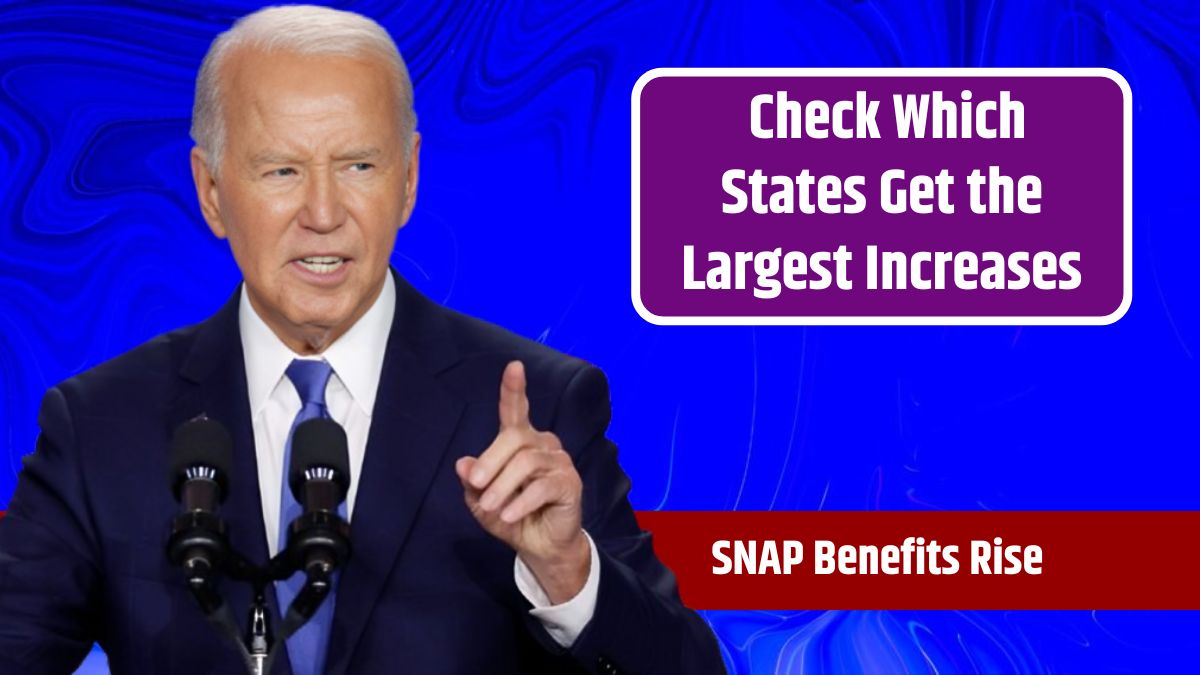The Supplemental Nutrition Assistance Program (SNAP), formerly known as the Food Stamp Program, provides crucial financial assistance to low-income individuals and families for purchasing food. Starting October 1, 2024, recipients will see slight increases in their benefits as a result of changes in the program. These adjustments come as food prices continue to rise, although the increases in benefits are modest compared to inflation-driven price hikes.
Benefit
On October 1, 2024, the maximum SNAP benefit allotments will increase for households across the United States. The exact amount each household receives depends on the size of the family and their income.
The largest increase will apply to families in states like Alaska, Hawaii, Guam, and the U.S. Virgin Islands, where the cost of living is particularly high. However, even in the 48 contiguous states and Washington D.C., there will be slight bumps in the benefit amounts.
Here’s a breakdown of the new maximum benefit amounts for the 48 states and D.C.:
| Household Members | SNAP Benefit Amount |
|---|---|
| 1 | $292 |
| 2 | $536 |
| 3 | $768 |
| 4 | $975 |
| 5 | $1,158 |
| 6 | $1,390 |
| 7 | $1,536 |
| 8 | $1,756 |
| Additional Person | +$220 |
In areas like Alaska, Guam, Hawaii, and the Virgin Islands, the increase is more pronounced due to the higher cost of living:
| Household Members | Guam | U.S. Virgin Islands | Alaska (Average) | Hawaii |
|---|---|---|---|---|
| 1 | $431 | $376 | $481 | $517 |
| 2 | $790 | $689 | $883 | $948 |
| 3 | $1,132 | $987 | $1,264 | $1,357 |
| 4 | $1,437 | $1,254 | $1,605 | $1,723 |
| 5 | $1,707 | $1,489 | $1,906 | $2,406 |
| 6 | $2,049 | $1,787 | $2,288 | $2,456 |
| 7 | $2,264 | $1,975 | $2,528 | $2,714 |
| 8 | $2,588 | $2,257 | $2,890 | $3,102 |
| Additional Person | +$324 | +$282 | +$361 | +$388 |
These adjustments reflect the slight increase in food prices, which were up 2% in August 2024 compared to the previous year. However, despite these increases, inflation continues to outpace the benefit adjustments, leaving many recipients still struggling with rising grocery costs.
Changes
In addition to the benefit increase, eligibility requirements for SNAP will also shift starting in October 2024. One of the most notable changes affects Able-Bodied Adults Without Dependents (ABAWDs) aged 52 to 54, who will now need to meet new work or education requirements to qualify for benefits.
These requirements have been in place for younger adults in this group, but now older individuals will also need to work at least 80 hours per month, enroll in an educational program, or undergo job training to receive continued assistance.
Affected
These work requirements primarily affect ABAWDs, a group of childless, able-bodied adults between the ages of 18 and 54. Those aged 53 and 54 will now have to meet the same work or education obligations as their younger counterparts. However, there are exceptions. Veterans, homeless individuals, and young adults aged 18 to 24 who have aged out of foster care will not be required to fulfill these requirements. Additionally, exemptions apply to those who are pregnant, living with a child under 18, or unable to work due to a physical or mental disability.
For those who do not meet the work or education requirements, SNAP benefits will be limited to three months over a three-year period. This tightening of eligibility requirements aligns with the Budget Responsibility Act and is intended to encourage employment and training among beneficiaries.
Impact
While the SNAP benefit increase is designed to help ease the burden of rising food costs, the adjustments may feel inadequate to many families struggling with inflation. Food prices have consistently outpaced wage growth, leaving low-income families with fewer options at the grocery store. The modest increase in SNAP benefits may offer some relief but likely won’t be enough to fully offset rising expenses.
In states with higher costs of living, such as Alaska and Hawaii, the benefit adjustments are more significant. For example, a family of four in Hawaii can receive up to $1,723 per month in SNAP benefits, compared to $975 for the same family in the 48 contiguous states. This difference reflects the higher grocery prices in these regions, but it still may not be enough to bridge the gap between wages and food costs.
What’s Next?
As October 2024 approaches, SNAP recipients should be prepared for these changes. While the increase in benefits will provide some relief, many households will continue to feel the pinch of inflation at the grocery store. In addition, those affected by the new work requirements must ensure they meet the necessary criteria to avoid losing their benefits.
For now, the slight boost in SNAP payments may help low-income families and individuals manage rising food costs, but it will likely not be a long-term solution to the inflationary pressures they face.
FAQs
When will the SNAP benefit increase take effect?
The increase starts on October 1, 2024.
How much will SNAP benefits increase by?
The increase will vary, but the average rise is a few dollars per household.
Who will be impacted by the new work requirements?
Childless, able-bodied adults between 53 and 54 years old.
Are there any exemptions to the work requirements?
Yes, veterans, homeless individuals, and certain young adults are exempt.
Will food costs continue to rise?
Food prices are still rising, though the rate has slowed compared to previous years.






